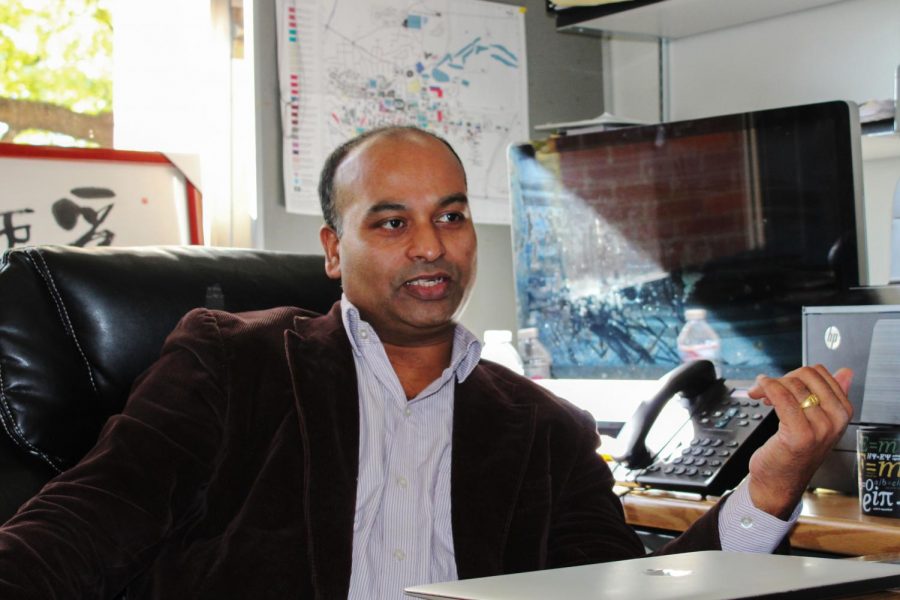WSU professor works to improve smart power grids
Process designed to locate anomalies in data, manage system
CHRISTIE HOMIUM | THE DAILY EVERGREEN
Professor Anurag Srivastava explains what a power grid is and how they work Wednesday in the Electrical Mechanical Engineering Building.
October 3, 2018
A WSU associate professor of power systems engineering is working on ways to make power grids better at functioning in situations that might normally cause failure, such as a storm or cyber-attack.
Anurag Srivastava, director of Smart Grid Demonstration and Research Investigation Lab, hosted a workshop in August to make power grids more resilient.
“Our goal was basically to bring top experts in the nation and international experts, either in power grid resiliency or in data science,” Srivastava said.
A power grid brings electricity from generators to buildings. A “smart” power grid is more digitized, while other grids work with an analog system, he said.
“When you say smart power grid, it basically means that the same power grid is being monitored and controlled with more and more … computational technology,” he said.
Smart power grids are more efficient, reliable and more resilient than older types of power grids, Srivastava said.
Making power grids more resilient means they are still able to supply power in challenging conditions, specifically to “critical loads” such as hospitals or fire departments.
“When extreme events happen, we don’t expect that we will still be able to supply all the power [to a whole city],” Srivastava said.
But with better technology, the number of places a grid can serve could increase.
“We have designed our system to be reliable, which means that if nothing fails, we can supply power to all the connected loads,” he said.
A resilient power grid can still supply electricity when several parts of the system fail.
Making sure power grids are resilient is especially important with the increasing number of extreme events due to climate change, Srivastava said.
Power grid experts employed the help of data scientists to sift through and understand the large amount of data being collected, he said. Sensors gather data, but with power grids becoming smarter, there is more and more data for experts to go through.
“All this data, as it increases, power engineers are not trained for that. They don’t know how to process the data in the fastest way to get information out,” Srivastava said. “There is data but we want, basically, information out from that data.”
Power grid data is gathered in control centers, such as the one WSU has on Grimes Way. Experts there monitor data and look for anomalies caused by things such as cyber-attacks that could signal a system problem that needs to be fixed.
Power engineers need to find out what is causing the anomaly, but it can be difficult to find the root cause.
“If everything is going as we expect, there’s nothing wrong, then we don’t need to take any control action, but that’s hardly the case,” Srivastava said.
Most of the time, there’s a problem that needs to be fixed somewhere in the system, Srivastava said. The faster data is processed, the faster power grid experts can make decisions when an anomaly arises. At the end of the day, he said there is one thing they care about.
“Our goal is keeping the power on,” Srivastava said. “That’s the final goal, especially for critical loads.”








